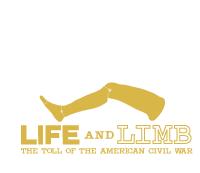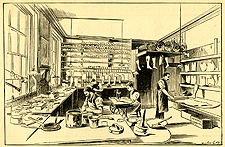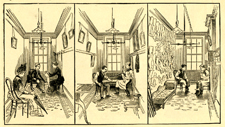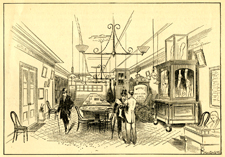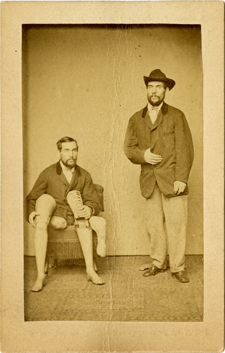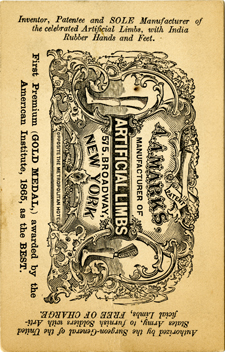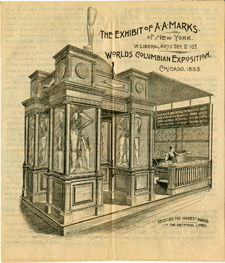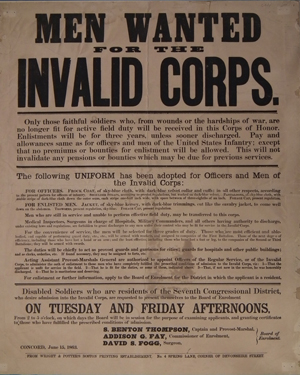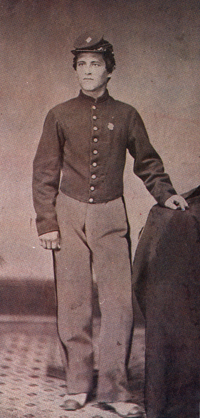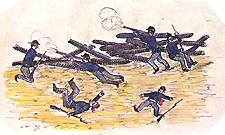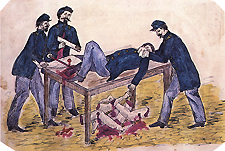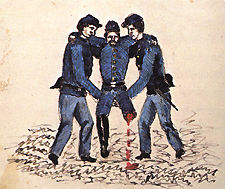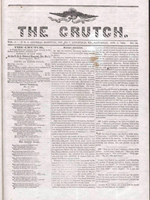"It is not two years since the sight of a person who had lost one of his lower limbs was an infrequent occurrence. Now, alas! there are few of us who have not a cripple among our friends, if not in our own families."
Physician Oliver Wendell Holmes, 1863

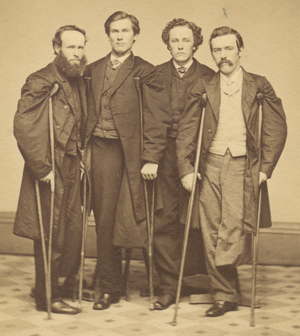
Veterans John J. Long, Walter H. French, E. P. Robinson, and an unidentified companion, 1860s
Courtesy Library of Congress
The vast numbers of men disabled by the conflict were a major cause of concern for Rebel and Union leaders. Some worried about preventing idleness and immoral behavior, while others focused on the economic hardship veterans would later face if they could not find employment after the war. Proposed solutions included wartime work as cooks, clerks, and hospital attendants, pensions and convalescent homes for those discharged from the army because of their disability, and funds for the purchase of artificial limbs.

Rebuilding the Body
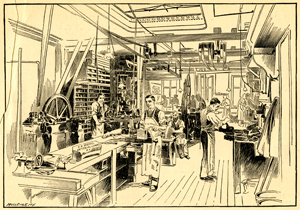
“From Stump to Limb,” on the making of prosthetics, by the manufacturer A. A. Marks, late 1800s
Courtesy Warshaw Collection, Archives Center, National Museum of American History, Smithsonian Institution
Almost 150 patents were issued for artificial limb designs between 1861 and 1873, as the industry expanded to accommodate the veteran population. In 1862 the Federal government allocated Union veterans $75 to buy an artificial leg and $50 for an arm, and by 1864 the Confederacy was also providing financial assistance for such purchases. The payments usually covered the cost of the device and travel to a showroom for it to be fitted.

Type of artificial leg invented by Samuel B. Jewett, 1869
Courtesy National Museum of Health and Medicine

Returning to the Army
The Invalid Corps was established by the federal government in 1863 to employ disabled veterans in war-related work. Soldiers were divided up into two battalions, based on the extent of their injuries. The first carried weapons and fought in combat. The second, made up of men with more serious impairments, served as nurses, cooks, and prison guards. Despite the rigorous workload, members of the Invalid Corps (known as the “Cripple Brigade” among their former comrades ), were not offered the generous financial awards granted to re-enlisting soldiers and new recruits in the Union. Nicknamed “Inspected-Condemned” after the initials stamped on faulty goods, the Invalid Corps was renamed the Veteran Reserve Corps in 1864 to put an end to the mockery.
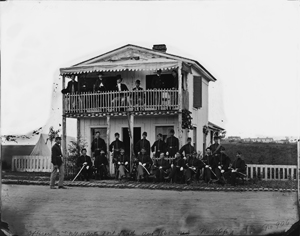
Company D, 10th US Veteran Reserve Corps, Washington D.C., 1865
Courtesy National Library of Medicine
Alfred Bellard, a private in the 5th New Jersey Volunteer Infantry, was wounded in the battle of Chancellorsville, VA, in May 1863. His severe leg injury prevented him from returning to the regular army, so he joined the Invalid Corps instead. Bellard described the carnage of the war in his diary and included graphic illustrations of the fate of soldiers.
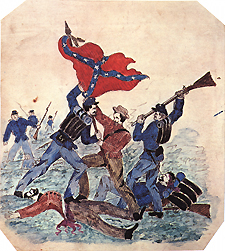
"The color bearer wound not give up the standard until he was knocked down", drawings from the diary of Alfred Bellard, 1860s
Courtesy Alec Thomas Archives
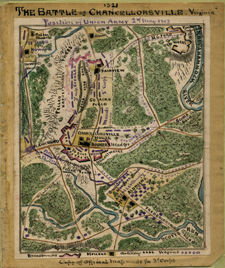
Map of the battle of Chancellorsville, VA, by Robert Know Sneden, 1860s
Courtesy Library of Congress

The Crutch, 1 October 1864
Courtesy Western Reserve Historical Society
DOWNLOAD THE PDF 


